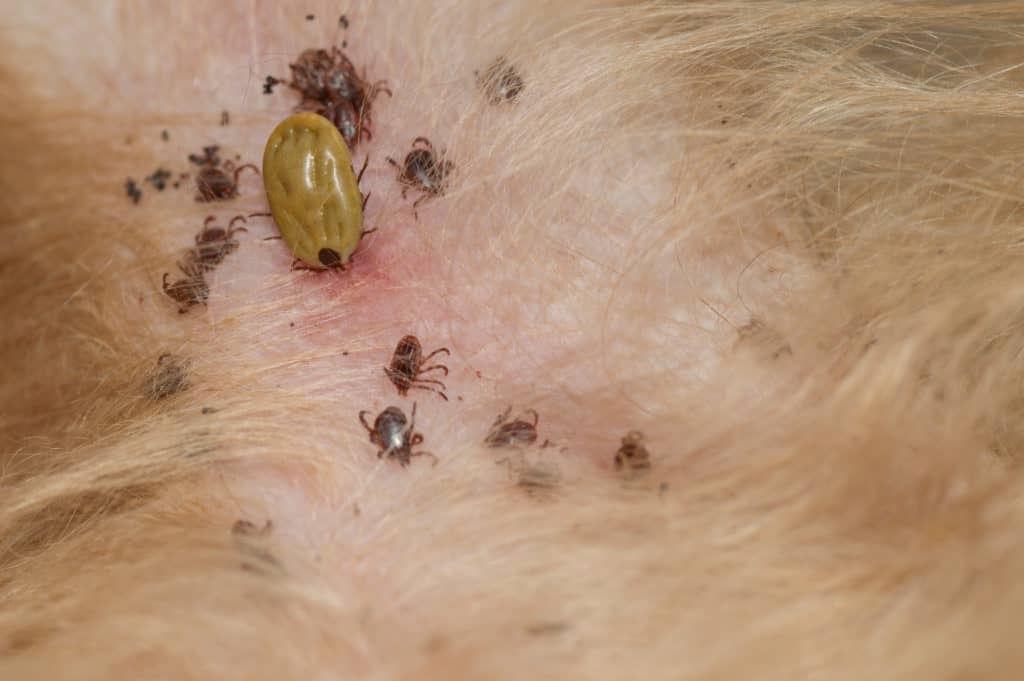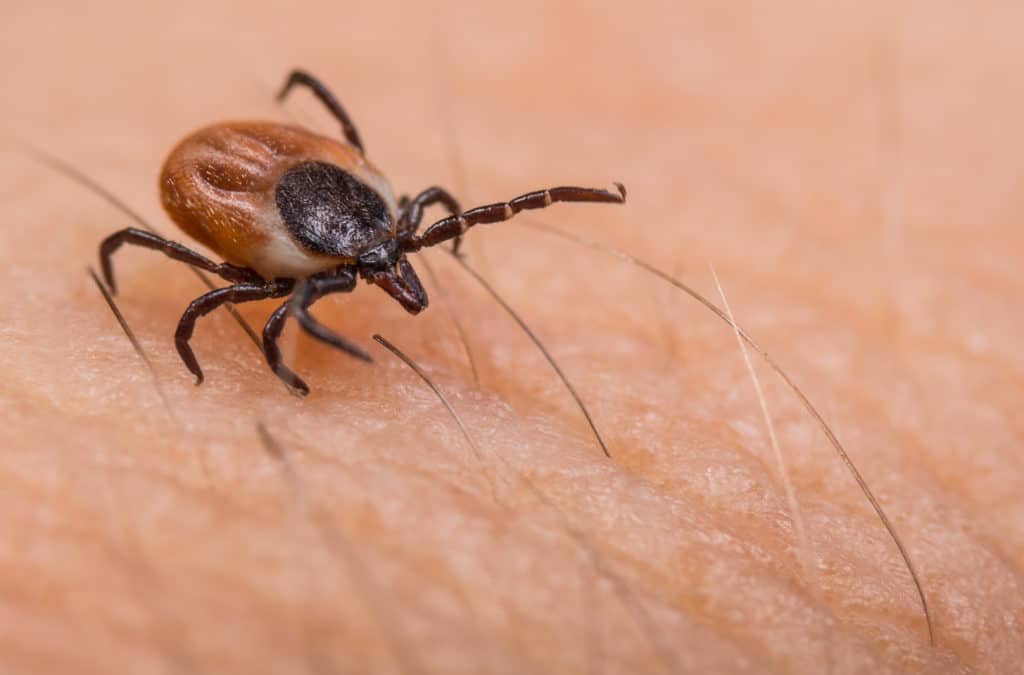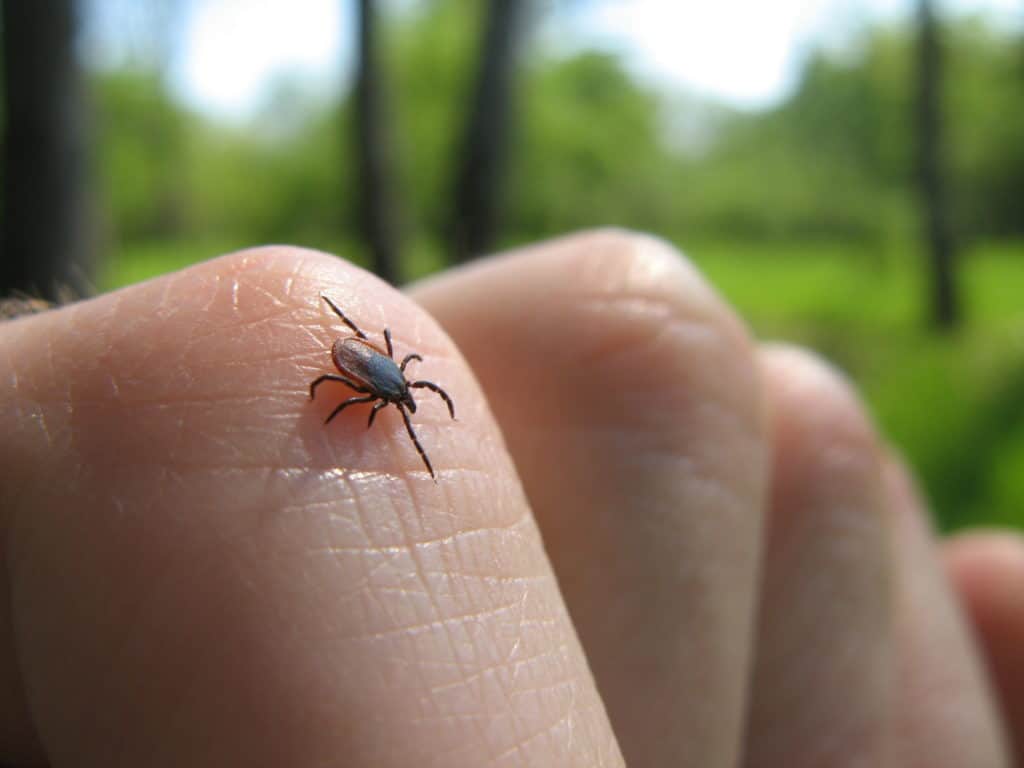Terrible Tick Surveillance
Terrible Tick Surveillance
The Importance of Tick Surveillance
Mosquitos may be the most infamous insect vectors of disease, but ticks aren’t too far behind. In fact, probably one of the main reasons why their negative medical impact is not considered as high is merely because it is easier to avoid them due to their lack of flight, as opposed to their tendency to transmit diseases.
Along with Lyme disease, ticks can pass Rocky Mountain Spotted fever, Heartland virus, Colorado tick fever, Bourbon virus, Powassan disease, Tularemia, Rickettsiosis, Ehrlichiosis, Babesiosis, Anaplasmosis, and more. No matter what stage of their life cycle that a tick is in, if it is infected with disease, it is able to spread the pathogens onto a new victim. According to the CDC, new cases of just Lyme disease alone are reportedly between 30,000 – 300,000 in a year. Symptoms from these various diseases can range from minor fevers, chills, aches/pains, and rashes, to severe medical emergencies that can require hospitalization and even death.
Between 2004 and 2018, the Cneters for Disease Control and Prevention (CDC) reported that annual cases of tickborne diseases doubled. Then, in an online research study conducted by Advanced Symbolics, it was discovered that there has been an additional 11.4% spike in tick problems from January 2018 to May 2019. Furthermore, throughout these swells in infection rates, scientists identified 7 new tickborne diseases.

Recording the Spread
While it appears medical facilities have been recording records of cases and transmission, there has been an apparent lack in the surveillance and control of ticks across the country. While some programs exist, they are often under-supported or operate as individual entities leading to an uncoordinated attack on these disease-ridden pests.
Researchers in the CDC’s Vector-Borne Disease Regional Centers of Excellence conducted the the first nationwide survey regarding tick management programs. In the survey, it was discovered that only half of our nation’s public health departments actively survey tick populations and activity. Furthermore, of that group, only 12% engage in, or support, targeted tick control. The leader of the study, Emily M. Mander MPH MPP, commented on this disparity, stating, “ticks are responsible for the majority of our vector-borne illnesses in the U.S., and our programming does not adequately meet the need in its current form for both surveillance and control.”

What We Can Change
In response to this lack in tick management programs, there are important hurtles to be cleared in order to create a safer environment and effectively work to cut the number of tick-borne disease cases. Co-author of Mander’s study, Nohra Mateus-Pinilla, Ph.D., explains the importance behind continued tick surveillance in order con conduct proper tick control on a large scale. “Overall, tick-work demands long-term commitment. Ticks can take years to complete their life cycle, use different hosts to move around, and take advantage of weather and habitat changes. As such, research on these vectors requires long-term and sustained commitment to research, surveillance, and partnerships across a broad range of disciplines, health professionals and the public.” As such, on an institutional level, the following changes would have to occur:
- Better info/data sharing across monitoring agencies regarding both tick populations/activity and cases of tick-borne disease
- Regularly reporting potential tick threats to the CDC
- Broadening the sectors that handle and/or support tick control programs including (but not limited to) public health departments, natural resource management, departments of agriculture, departments of parks and recreation, local university departments of agriculture and entomology, local pest control companies, etc.
- Increased funding for tick control programs
Luckily, the Kay Hagan Tick Act was finally signed into law in December of 2019. This law offers a reauthorization of CDC’s Vector-Borne Disease Regional Centers for Excellence through 2026, as well as providing a budget of $150 million to help combat tick-borne diseases. These steps, in tandem with this new law, will hopefully help to drastically reduce the cases of tick-borne diseases.

Citations
Diseases Transmitted by Ticks – In the U.S. (2020) Centers for Disease Control and Prevention. The U.S. Department of Health and Human Services. The National Center for Emerging and Zoonotic Infectious Diseases – Division of Vector-Borne Diseases. Available at: https://www.cdc.gov/ticks/diseases/index.html (Accessed: September 2020).
Guide to Different Tick Species and the Diseases They Carry (2019) Mayo Clinic. Mayo Foundation for Medical Education and Research. Available at: https://www.mayoclinic.org/tick-species/sls-20127911 (Accessed: April 2020).
Mosquitos (2019) National Geographic. National Geographic Partners. Available at:https://www.nationalgeographic.com/animals/invertebrates/group/mosquitos/ (Accessed: April 2020).
Tick Surveillance and Control Lagging in the U.S., Study Shows (2020) Entomology Today. The Entomological Society of America. Available at: https://entomologytoday.org/2020/06/17/tick-management-surveillance-control-lagging-united-states/ (Accessed: September 2020).
8 Creative Ways to Have a Pest-Free Fourth of July
8 Creative Ways to Have a Pest-Free Fourth of July 8 Creative Ways to Have a Pest-Free Fourth of July Summary: The Fourth [...]
A Simple Guide to Preventing Stinging Pests
A Simple Guide to Preventing Stinging Pests A Simple Guide to Preventing Stinging Pests Summary: Stinging insects are more active in warm weather, [...]
These 10 Natural Mosquito Repellents Can Actually Help
These 10 Natural Mosquito Repellents Can Actually Help These 10 Natural Mosquito Repellents Can Actually Help Summary: Natural mosquito repellents are easier to [...]
How to Get Rid of Carpet Beetles
How to Get Rid of Carpet Beetles How to Get Rid of Carpet Beetles Summary: Carpet beetles are sneaky pests that don’t usually [...]
How Do Roaches Affect Asthma and Allergies?
How Do Roaches Affect Asthma and Allergies? How Do Roaches Affect Asthma and Allergies? Summary: It’s no secret that pests impact human health, [...]
These 5 Carnivorous Pests Might Surprise You!
These 5 Carnivorous Pests Might Surprise You! These 5 Carnivorous Pests Might Surprise You! Summary: There are many eco-friendly ways to prevent pests, [...]

